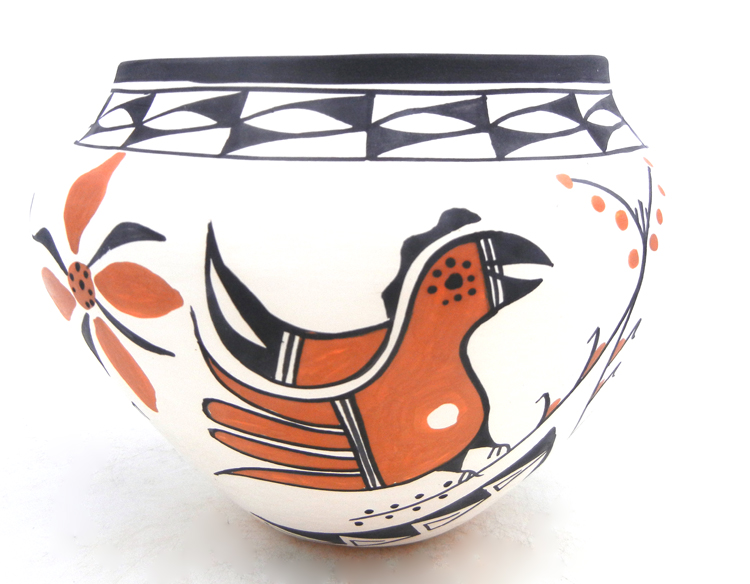Acoma pottery, renowned for its intricate designs and exquisite craftsmanship, has a rich history rooted in tradition and cultural significance.
At Palms Trading Co., we are passionate about showcasing the beauty and artistry of Acoma pottery designs, which often incorporate unique textural techniques to create stunning works of art.
Acoma Pottery
Acoma pottery, also known as “Sky City pottery,” is created by the Acoma Pueblo people of New Mexico. This ancient art form has been passed down through generations, with each piece reflecting the cultural heritage and artistic vision of its creator.
The Art of Texture in Acoma Pottery
Texture in Acoma pottery is not merely a visual aspect but a tactile experience that enhances the overall appeal of the artwork. The intricate patterns and motifs found in Acoma pottery are not just decorative elements but symbols of the rich cultural heritage and spiritual beliefs of the Acoma people. The tactile quality of these designs adds layers of meaning, inviting viewers to engage with the pottery on a deeper level.
One of the remarkable aspects of Acoma pottery is the use of traditional materials and techniques passed down through generations. The clay used in Acoma pottery is sourced locally, adding to the authenticity and connection to the land. The process of shaping and molding the clay by hand allows artists to infuse their pieces with a sense of intimacy and craftsmanship that cannot be replicated by mass-produced ceramics.
Furthermore, the firing process adds to the textural complexity of Acoma pottery. The high temperatures of the kiln transform the clay, creating subtle variations in color and texture that give each piece its unique character. These imperfections are celebrated as a testament to the handmade nature of the pottery, reinforcing its value as a work of art.
Texture in Acoma pottery serves not only as a visual delight but also as a tangible expression of culture, tradition, and craftsmanship. Each piece tells a story through its intricate patterns and tactile surfaces, inviting viewers to appreciate the beauty and complexity of this ancient art form.
Textural Techniques in Acoma Pottery
One of the most common textural techniques used in Acoma pottery is coiling, where thin strips of clay are coiled and smoothed together to form the desired shape. This method allows artists to create vessels of various sizes and shapes, from simple bowls to elaborate jars and vases.
Slip Painting: Adding Depth to Acoma Designs
Slip painting is another technique widely used in Acoma pottery. Artists mix clay with water to create a smooth paste, which is then applied to the surface of the pottery before firing. This allows for intricate designs and vibrant colors to be painted onto the clay, adding depth and richness to the finished piece.
Finishing and Firing: Achieving the Final Texture
After the pottery has been formed and decorated, it is ready to be fired in a kiln, where it undergoes a chemical transformation, hardening the clay and setting the colors. This final firing process enhances the texture of the pottery, giving it a smooth and lustrous appearance. Acoma pottery is rarely ever polished, traditionally showcasing a beautiful matte finish.
At Palms Trading Co., we offer a curated selection of Acoma pottery designs, each showcasing the unique textural techniques and artistic vision of the Acoma Pueblo people. Whether you’re a collector or enthusiast or simply appreciate the beauty of indigenous art, we invite you to explore our collection and discover the timeless allure of Acoma pottery.
Contact us today for more information on our Acoma pottery collection and to bring a piece of Native American art into your home.



